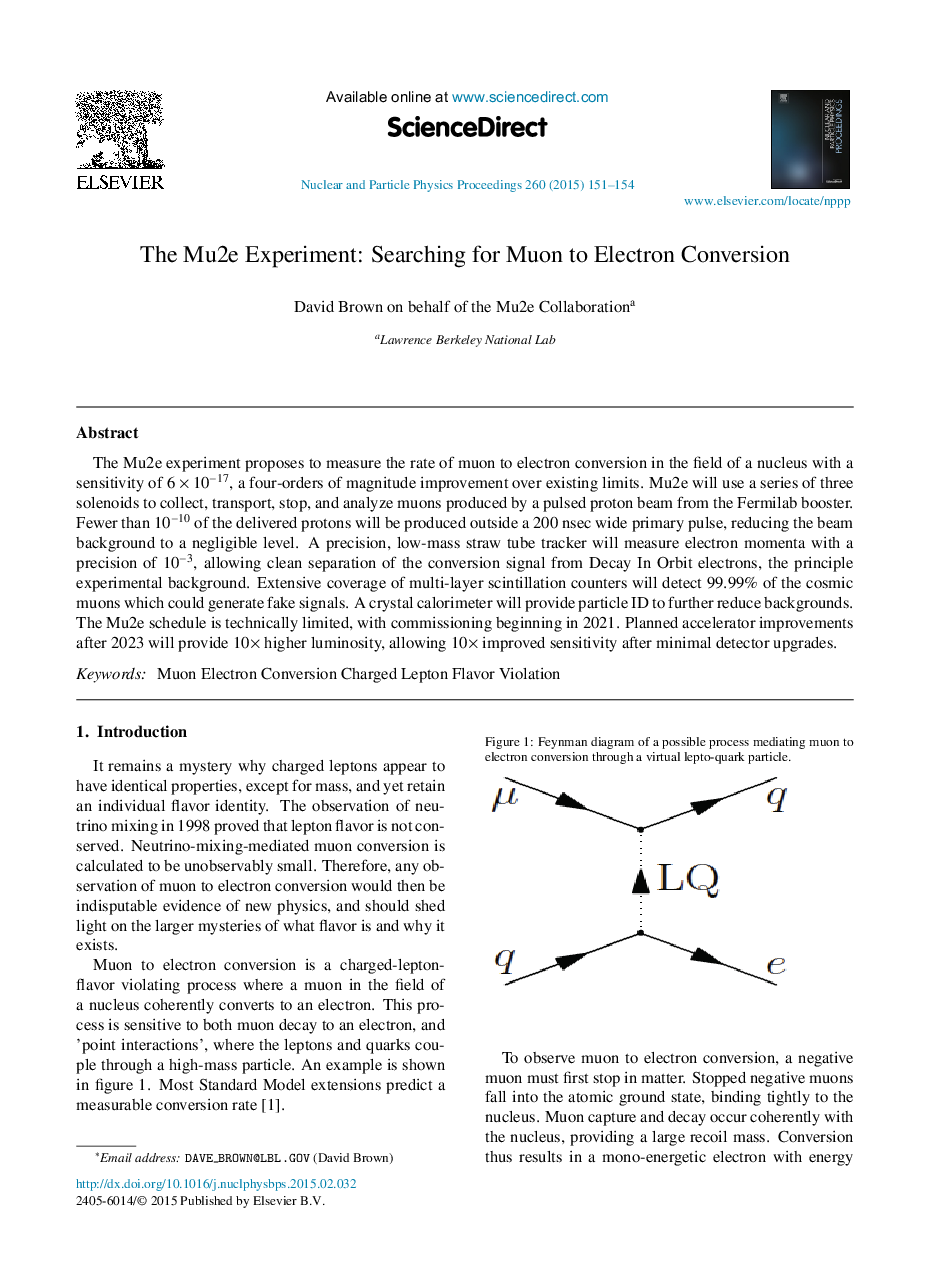| کد مقاله | کد نشریه | سال انتشار | مقاله انگلیسی | نسخه تمام متن |
|---|---|---|---|---|
| 1835284 | 1526778 | 2015 | 4 صفحه PDF | دانلود رایگان |

The Mu2e experiment proposes to measure the rate of muon to electron conversion in the field of a nucleus with a sensitivity of 6×10−17, a four-orders of magnitude improvement over existing limits. Mu2e will use a series of three solenoids to collect, transport, stop, and analyze muons produced by a pulsed proton beam from the Fermilab booster. Fewer than 10−10 of the delivered protons will be produced outside a 200 nsec wide primary pulse, reducing the beam background to a negligible level. A precision, low-mass straw tube tracker will measure electron momenta with a precision of 10−3, allowing clean separation of the conversion signal from Decay In Orbit electrons, the principle experimental background. Extensive coverage of multi-layer scintillation counters will detect 99.99% of the cosmic muons which could generate fake signals. A crystal calorimeter will provide particle ID to further reduce backgrounds. The Mu2e schedule is technically limited, with commissioning beginning in 2021. Planned accelerator improvements after 2023 will provide 10× higher luminosity, allowing 10× improved sensitivity after minimal detector upgrades.
Journal: Nuclear and Particle Physics Proceedings - Volume 260, March 2015, Pages 151-154